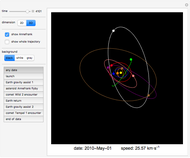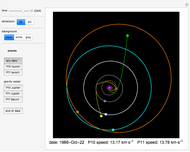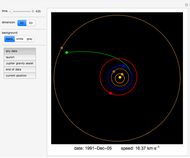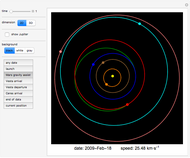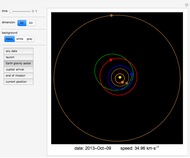Orbital Resonance in the Asteroid Belt

Requires a Wolfram Notebook System
Interact on desktop, mobile and cloud with the free Wolfram Player or other Wolfram Language products.
The asteroid belt, located roughly between the orbits of the planets Mars and Jupiter, between about 2.2 to 3.2 astronomical units (310 to 500 million km) from the Sun, is a large collection of several hundred thousand irregularly shaped bodies variously called asteroids, planetesimals or minor planets.
[more]
Contributed by: S. M. Blinder (April 2018)
Open content licensed under CC BY-NC-SA
Snapshots
Details
References
[1] Wikipedia. "Asteroid Belt." (Mar 27, 2018). en.wikipedia.org/wiki/Asteroid_belt.
[2] Wikipedia. "Orbital Resonance." (Mar 27, 2018). en.wikipedia.org/wiki/Orbital_resonance.
Permanent Citation
"Orbital Resonance in the Asteroid Belt"
http://demonstrations.wolfram.com/OrbitalResonanceInTheAsteroidBelt/
Wolfram Demonstrations Project
Published: April 4 2018










